When upgrading or building your mountain bike, one of the key decisions you’ll face is whether to go with a Boost or non-Boost chainring. This choice can significantly impact your bike’s performance, compatibility, and overall ride quality. But what exactly is the difference, and how do you know which one is right for you? Let’s break it down.
Understanding Boost vs. Non-Boost
The term “Boost” refers to a newer standard in mountain bike design that widens the hub spacing—from 142mm to 148mm in the rear and from 100mm to 110mm in the front. This wider spacing allows for stiffer wheels, better tire clearance, and improved chainline alignment. As a result, Boost-compatible chainrings are designed to work with this updated spacing, ensuring optimal performance and shifting precision.
Non-Boost chainrings, on the other hand, are designed for traditional hub spacing. While they’re still widely used and compatible with older bikes, they may not offer the same level of stiffness and tire clearance as Boost setups.
Which One Do You Need?
The answer depends on your bike’s specifications. If you’re riding a modern mountain bike with Boost spacing, you’ll need a Boost chainring to maintain proper chainline and shifting performance. However, if your bike uses traditional spacing, a non-Boost chainring is the way to go.
It's also worth considering your future plans. If you’re upgrading other components, like your fork (check out Trifox Bike’s rigid forks at TrifoxBike.com), opting for Boost compatibility can future-proof your setup and unlock additional benefits like improved wheel stiffness and tire options.
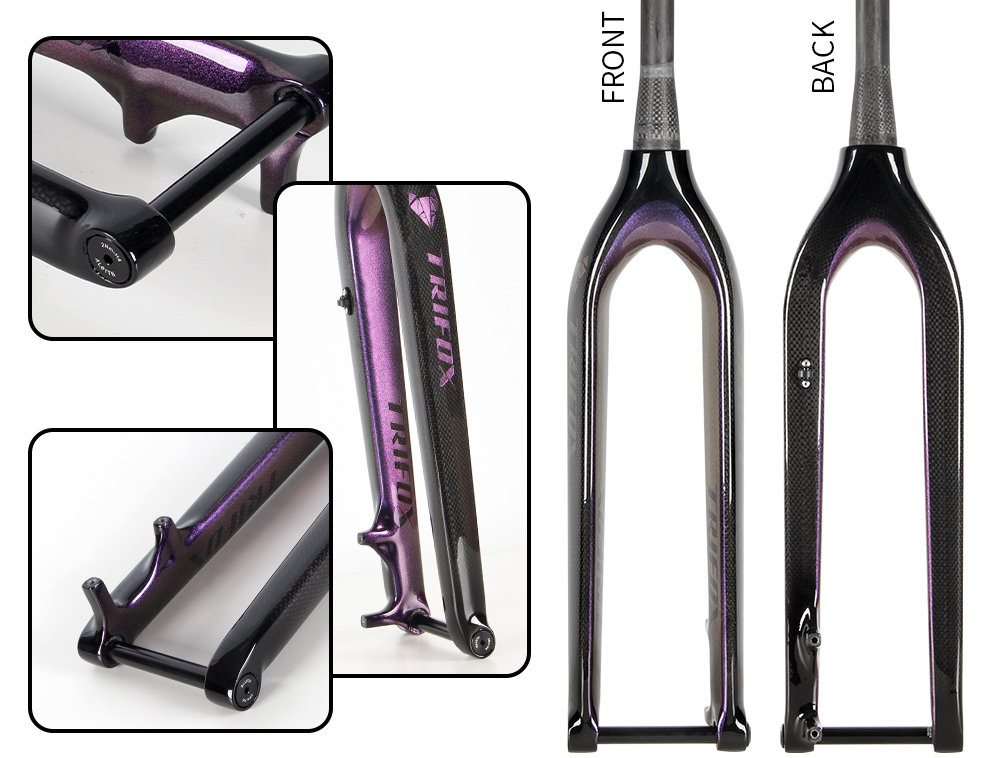
Choosing between Boost and non-Boost chainrings ultimately comes down to your bike’s specifications and your riding goals. If you’re unsure, consult your bike’s manual or a trusted mechanic. And if you’re in the market for high-quality components, Trifox Bike offers a range of options to suit your needs. Whether you’re sticking with non-Boost or embracing the Boost revolution, the right chainring will keep your ride smooth and efficient.
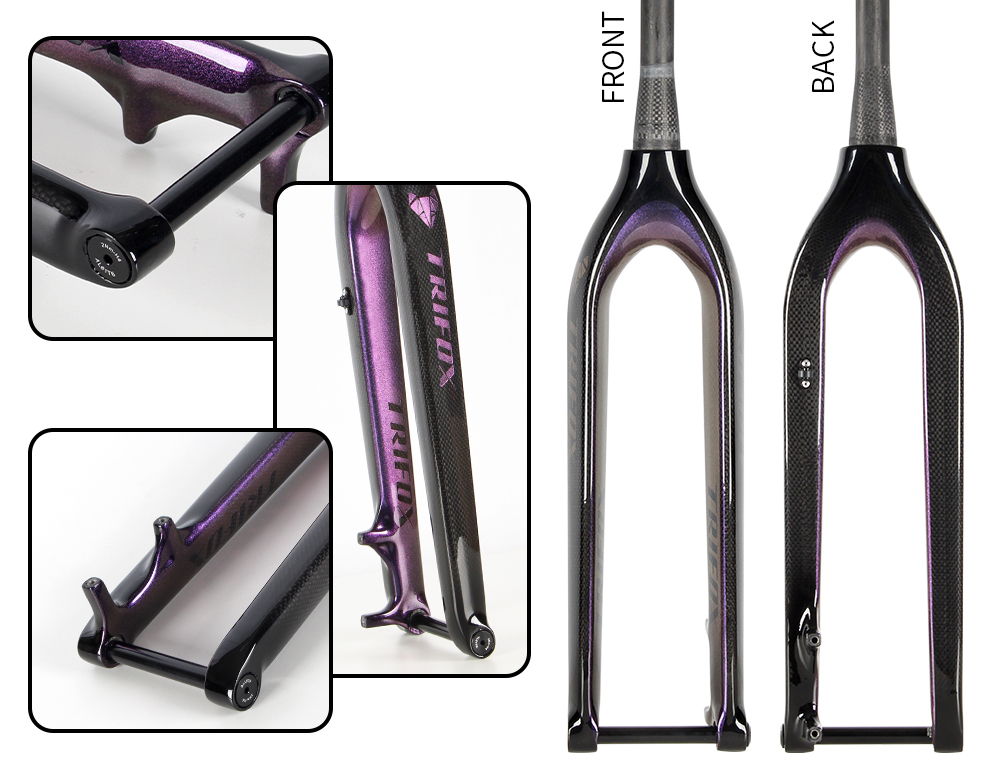
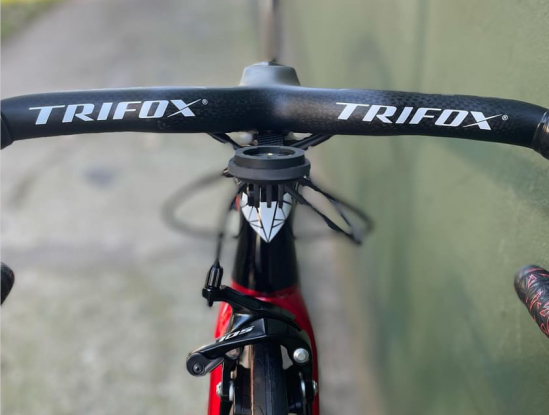
Finding the right handlebar height is crucial for comfort, efficiency, and injury prevention while cycling. Whether you're a casual rider or a seasoned cyclist, the correct handlebar height ensures proper posture, reduces strain on your body, and enhances your overall riding experience. Here’s how to determine the best handlebar height for your bike.
1. Understand Your Riding Style
Your ideal handlebar height depends on the type of cycling you do. For road bikes, a lower handlebar position promotes aerodynamics and speed, making it ideal for racing or long-distance rides. For mountain bikes or hybrid bikes, a higher handlebar position offers better control and comfort, especially on rough terrain or during casual rides.
2. Assess Your Flexibility and Comfort
Your body's flexibility plays a significant role in determining handlebar height. If you’re less flexible, a higher handlebar position reduces strain on your back, neck, and shoulders. Conversely, if you’re more flexible, a lower position can improve aerodynamics without causing discomfort. Test different heights and pay attention to how your body feels during and after the ride.
3. Check Your Saddle-to-Handlebar Drop
The relationship between your saddle and handlebar height is key. For road bikes, a slight drop (2-4 inches) between the saddle and handlebars is common, promoting an aerodynamic posture. For comfort-focused bikes, the handlebars can be level with or slightly above the saddle. Use a level or measuring tape to ensure consistency.
4. Experiment and Adjust
Start with a neutral position and make small adjustments. Loosen the stem bolts and raise or lower the handlebars incrementally. Take short test rides after each adjustment to evaluate comfort and control. If you experience numbness, pain, or discomfort, tweak the height until you find the sweet spot.
5. Consider Professional Help
If you're unsure or want a precise fit, consider a professional bike fitting. Experts use tools and measurements to tailor your bike’s setup to your body, ensuring optimal handlebar height and overall ergonomics.
The best handlebar height is a balance between comfort, performance, and your riding style. By understanding your needs, experimenting with adjustments, and listening to your body, you can find the perfect setup for a smoother, more enjoyable ride. Remember, a well-fitted bike not only enhances performance but also keeps you riding pain-free for miles to come.
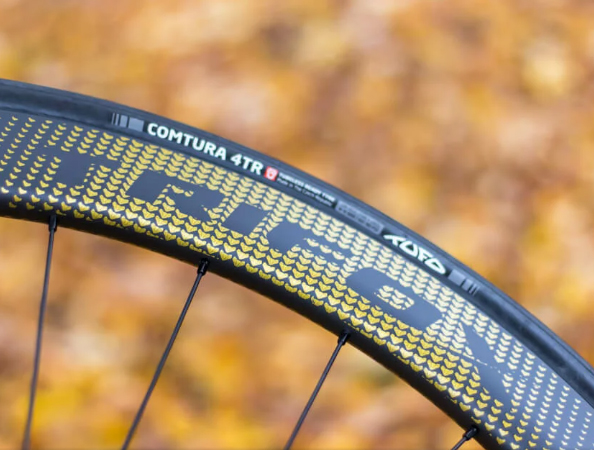
When you see a road bike, one of the first things you might notice is its sleek, aerodynamic design. Among the many features that contribute to this efficiency, the thick rims stand out. But why do road bikes have thick rims? The answer lies in a combination of aerodynamics, strength, and performance optimization.
Aerodynamics: Slicing Through the Air
The primary reason for thick rims on road bikes is aerodynamics. Thicker rims, often referred to as "deep-section" rims, are designed to cut through the air more efficiently. When cycling at high speeds, air resistance becomes a significant factor in slowing you down. Thick rims reduce drag by allowing air to flow more smoothly around the wheel. This is especially important for road bikes, where speed is a priority. By minimizing turbulence, thick rims help riders maintain higher speeds with less effort, making them a favorite among competitive cyclists.
Strength and Stability
Thick rims also offer increased strength and stability. Road bikes are built for speed and endurance, often covering long distances on varied terrain. Thicker rims are more robust and less prone to bending or warping under pressure, whether from rough roads or the force exerted during hard sprints. This durability ensures that the wheels remain true and reliable, even during intense rides. Additionally, the added stiffness of thick rims improves power transfer, meaning more of your pedaling effort goes directly into propelling the bike forward.
Weight Considerations
While thick rims are heavier than their thinner counterparts, advancements in materials like carbon fiber have made it possible to create deep-section rims that are both lightweight and strong. Modern road bikes strike a balance between rim thickness and weight, ensuring that the benefits of aerodynamics and strength aren’t offset by excessive bulk. For competitive cyclists, this balance is crucial, as every gram counts when racing against the clock.
Aesthetic Appeal
Beyond performance, thick rims also contribute to the modern, aggressive look of road bikes. Their bold, streamlined appearance signals speed and efficiency, appealing to both professional riders and cycling enthusiasts. This visual impact is often a selling point for high-end road bikes, where aesthetics and performance go hand in hand.
Thick rims on road bikes are a result of careful engineering aimed at maximizing speed, strength, and efficiency. By reducing aerodynamic drag, enhancing durability, and improving power transfer, they play a critical role in the performance of modern road bikes. Whether you're a competitive racer or a weekend warrior, thick rims help you ride faster, smoother, and with greater confidence.
So, the next time you see a road bike with deep-section rims, you'll know they're not just for show—they're a key component in the pursuit of cycling excellence.
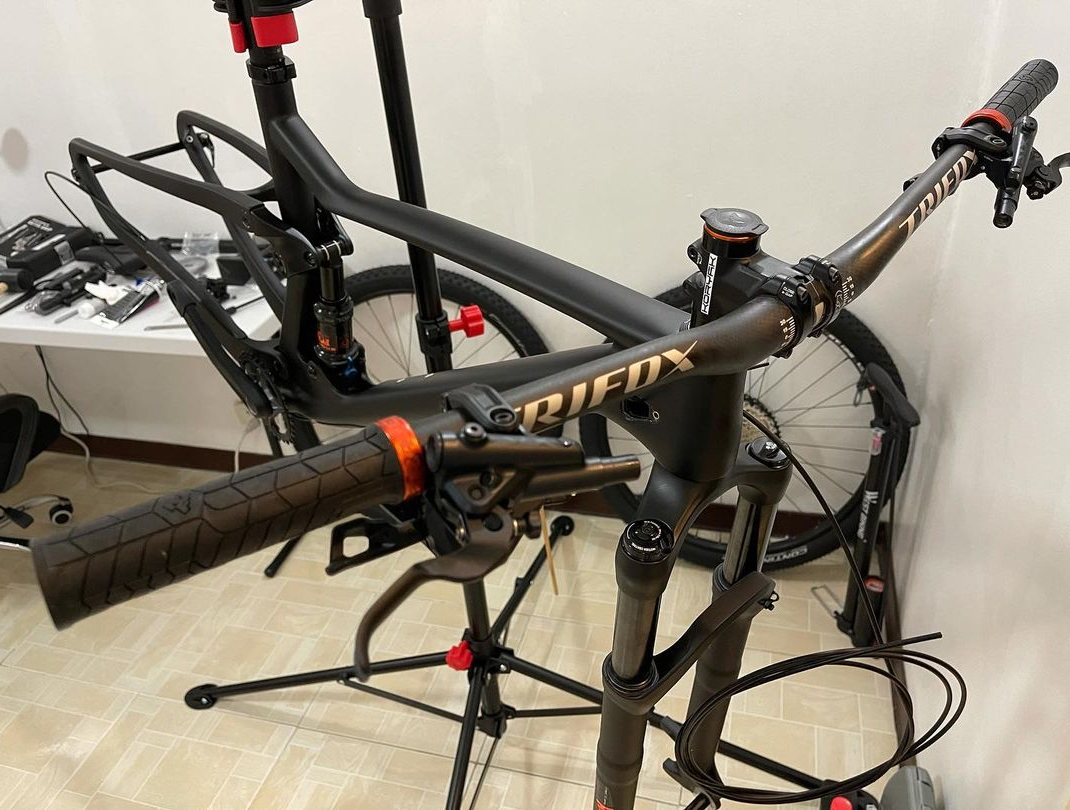
Cycling is all about efficiency, speed, and comfort, and one of the best ways to enhance all three is by upgrading to aero bars. Whether you're a competitive triathlete, a long-distance rider, or simply looking to improve your performance, aero bars can transform your cycling experience.
Trifoxbike.com offers a range of high-quality carbon bike handlebars, including aero bars, designed to help you ride faster and smarter. Here’s why you should consider making the switch.
What Are Aero Bars?
Aero bars, or triathlon bars, are handlebar extensions that allow riders to adopt a more aerodynamic position. By positioning your arms closer together and lowering your torso, aero bars reduce wind resistance, which is one of the biggest obstacles to speed. This streamlined posture can significantly improve your efficiency, especially during long rides or races.
Benefits of Aero Bars
1. Increased Speed: The primary advantage of aero bars is their ability to cut through the wind. By reducing drag, you can maintain higher speeds with less effort, making them a game-changer for time trials and triathlons.
2. Improved Comfort: Aero bars provide an additional hand position, reducing strain on your wrists, shoulders, and back during long rides. This can help prevent fatigue and keep you riding longer.
3. Better Power Transfer: The forward-leaning position engages your core muscles, allowing for more efficient power transfer from your legs to the pedals.
Why Choose Carbon Aero Bars?
Carbon fiber aero bars, like those available at Trifoxbike.com, offer the perfect balance of strength, stiffness, and lightweight performance. Carbon’s natural vibration-dampening properties also enhance comfort, making it an ideal material for long-distance cycling. Plus, the sleek design of carbon aero bars adds a professional touch to your bike's aesthetics.
If you're ready to take your cycling to the next level, investing in aero bars is a smart move. Visit [Trifoxbike.com]to explore their selection of carbon bike handlebars and find the perfect fit for your ride. With improved speed, comfort, and efficiency, aero bars are the upgrade your cycling experience deserves. Don’t let wind resistance hold you back—embrace the aero advantage today!
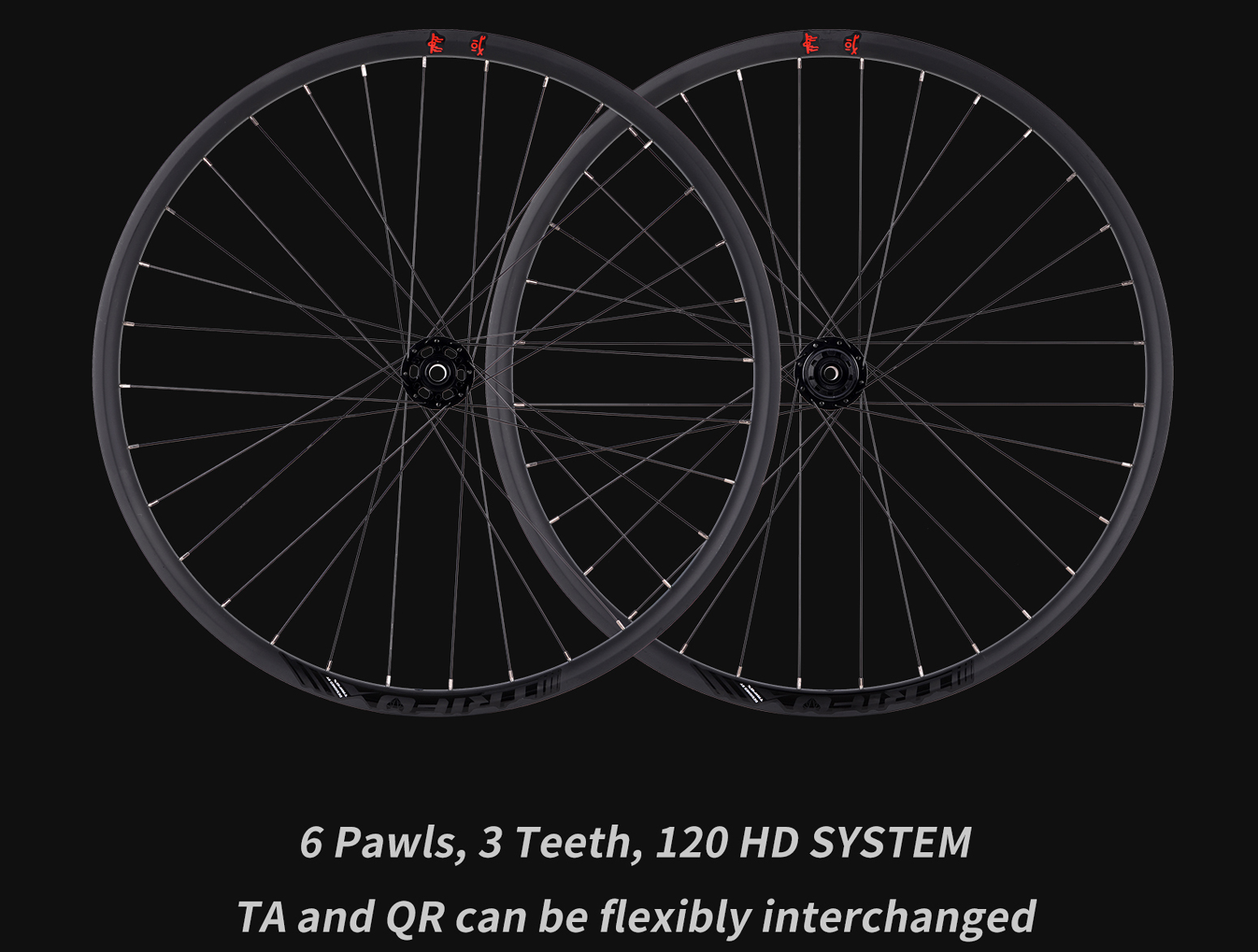
When it comes to cycling, every component of your bike plays a role in your overall experience, but few parts are as critical as the wheels. Bicycle wheels are not just round frames that keep you moving—they are the foundation of your ride, influencing everything from speed and efficiency to comfort and safety. So, are bicycle wheels important? Absolutely. Here’s why.
The Foundation of Motion
Bicycle wheels are the primary point of contact between your bike and the ground. They bear the weight of the rider, absorb shocks from the road, and transfer your pedaling power into forward motion. Without well-functioning wheels, your bike simply wouldn’t move efficiently—or at all. The design, material, and condition of your wheels directly impact how smoothly and quickly you can ride.
Speed and Efficiency
High-quality wheels can significantly improve your bike’s performance. Lightweight wheels, often made from materials like aluminum or carbon fiber, reduce rotational mass, making it easier to accelerate and maintain speed. Aerodynamic wheel designs further enhance efficiency by cutting through the air with minimal resistance. For competitive cyclists, investing in premium wheels can mean the difference between winning and losing a race.
Comfort and Stability
Wheels also play a key role in ride comfort. Larger wheels, such as those found on road bikes or hybrids, roll more smoothly over bumps and cracks, providing a more comfortable experience. The tires mounted on the wheels also contribute to comfort, but the wheel’s ability to maintain its shape and absorb vibrations is equally important. Properly tensioned spokes and a true (straight) wheel ensure stability, reducing wobbling and making the bike easier to control.
Safety and Durability
Your safety on the bike depends heavily on the condition of your wheels. A damaged or improperly maintained wheel can fail unexpectedly, leading to accidents. Regularly checking for issues like loose spokes, cracks, or dents in the rim is essential. Additionally, wheels designed for specific terrains—such as wider, sturdier wheels for mountain biking—provide better traction and durability, reducing the risk of slips or mechanical failures.
Customization and Versatility
Bicycle wheels are highly customizable, allowing riders to tailor their bikes to specific needs. Whether you’re looking for lightweight wheels for racing, robust wheels for off-roading, or puncture-resistant tires for commuting, the right wheels can transform your ride. Swapping out wheels can even change the entire feel of your bike, making it more versatile for different types of cycling.
Bicycle wheels are far more than just circular frames—they are the heart of your bike’s performance. From speed and efficiency to comfort and safety, wheels influence every aspect of your ride. Investing in high-quality wheels and maintaining them properly ensures a smoother, faster, and safer cycling experience. So, the next time you’re out for a ride, take a moment to appreciate your wheels—they’re doing the heavy lifting to keep you moving forward!

When it comes to cycling, many riders focus on components like the frame, gears, or brakes, often overlooking one of the most critical elements of a bike: the spokes. These slender, often underappreciated parts play a vital role in ensuring a smooth, safe, and efficient ride. Without properly functioning spokes, your bike’s performance would suffer, and your safety could be compromised. Here’s why bike spokes are so crucial to your ride.
The Role of Spokes in Wheel Structure
Spokes are the thin metal rods that connect the hub (the center of the wheel) to the rim. Their primary function is to distribute the weight of the rider and the bike evenly across the wheel. This distribution is essential for maintaining the wheel’s shape and strength, especially when encountering bumps, potholes, or other obstacles. Without spokes, the rim would collapse under pressure, making the bike unrideable.
Spokes also help absorb shocks and vibrations from the road. When you hit a bump, the spokes flex slightly, reducing the impact on the rider and preventing damage to the wheel. This flexibility is key to maintaining a comfortable ride, particularly on rough terrain.
Strength and Durability
A well-built wheel with properly tensioned spokes is incredibly strong. Spokes work together to create a tensioned structure that can withstand significant forces. This is why even lightweight wheels can support heavy loads without buckling. However, if one or more spokes are loose, broken, or improperly tensioned, the wheel becomes unbalanced, leading to wobbling, reduced efficiency, and even potential failure.
Regular maintenance of your spokes is essential to ensure their longevity and performance. Over time, spokes can loosen due to constant stress and vibration. Periodic checks and adjustments by a professional can prevent issues like spoke fatigue or wheel misalignment, which could otherwise lead to costly repairs or accidents.
Impact on Ride Quality
Spokes directly influence the ride quality of your bike. A wheel with evenly tensioned spokes rolls smoothly, reducing friction and improving efficiency. This means you can ride faster and with less effort. On the other hand, a wheel with loose or uneven spokes can cause wobbling, making the bike harder to control and increasing the risk of accidents.
Additionally, spokes contribute to the overall weight of the bike. High-quality spokes made from materials like stainless steel or carbon fiber are lightweight yet strong, enhancing the bike’s performance without compromising durability. For competitive cyclists, every gram counts, and optimizing spoke quality can make a significant difference in speed and agility.
Safety Considerations
Broken or damaged spokes can compromise your safety. A single broken spoke can throw the wheel out of balance, causing it to rub against the brake pads or frame. This not only makes the bike harder to ride but also increases the risk of a sudden wheel failure, which could lead to a crash. Regularly inspecting your spokes for damage and addressing issues promptly is crucial for maintaining a safe ride.
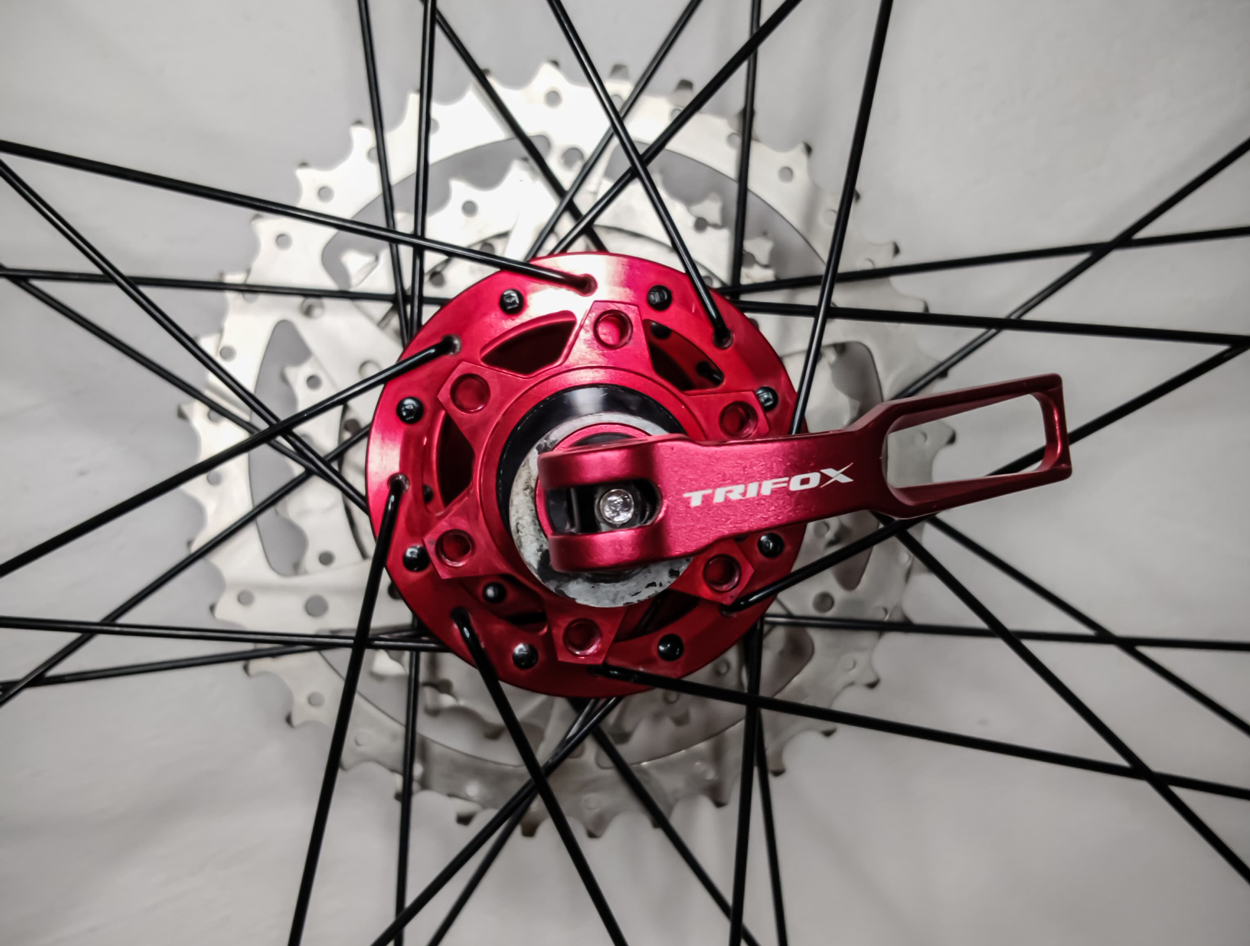
While bike spokes may seem like a small and insignificant part of your bicycle, they are, in fact, fundamental to its performance, durability, and safety. From maintaining the wheel’s structure to absorbing shocks and ensuring a smooth ride, spokes play a critical role in your cycling experience. By paying attention to their condition and ensuring proper maintenance, you can enjoy a safer, more efficient, and more enjoyable ride. So, the next time you hop on your bike, take a moment to appreciate the humble spoke—it’s working hard to keep you rolling!
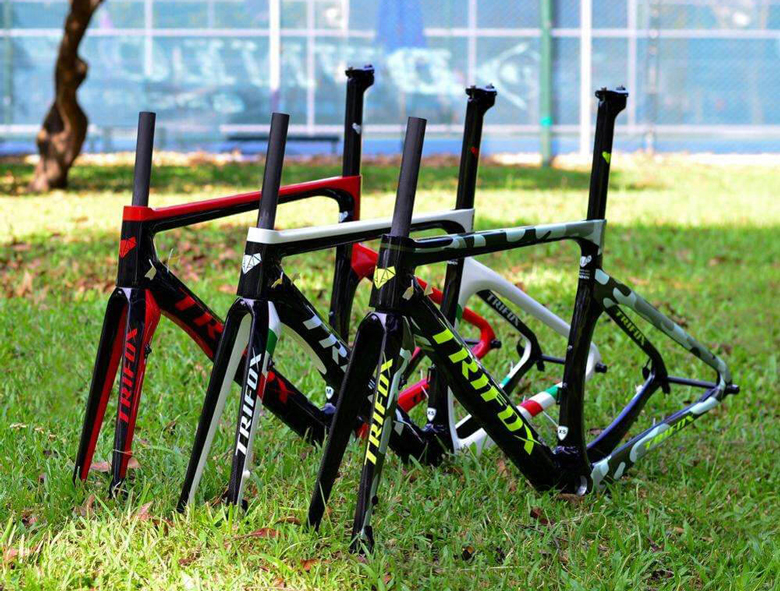
If you're considering diving into the world of road cycling, one of the first questions you’ll likely ask is, “How much does a good road bicycle cost?” The answer isn’t straightforward, as road bikes come in a wide range of prices depending on their components, materials, and intended use. Let’s break down the factors that influence the cost and help you determine what you can expect to pay for a quality road bike.
Entry-Level Road Bikes ($500 - $1,000)
For beginners or casual riders, entry-level road bikes are a great starting point. These bikes typically feature aluminum frames, basic components, and mechanical shifting systems. While they may lack the advanced features of higher-end models, they are reliable, lightweight, and perfect for commuting, fitness riding, or weekend adventures. Brands like Trifox Bike offer affordable options that deliver excellent value for money.
Mid-Range Road Bikes ($1,000 - $3,000)
Mid-range road bikes strike a balance between performance and affordability. These bikes often feature carbon fiber frames, which are lighter and more efficient than aluminum, along with better-quality components like hydraulic disc brakes and mid-tier drivetrains (e.g., Shimano 105 or SRAM Rival). If you’re serious about cycling and want a bike that can handle longer rides, faster speeds, and more varied terrain, this price range is a solid investment.
High-End Road Bikes ($3,000 - $7,000+)
High-end road bikes are designed for performance enthusiasts and competitive cyclists. They boast top-tier carbon frames, advanced aerodynamic designs, and premium components like electronic shifting (e.g., Shimano Dura-Ace or SRAM Red). These bikes are incredibly lightweight, stiff, and responsive, making them ideal for racing or high-intensity training. While the price tag is steep, the performance gains are undeniable.
Custom and Premium Options ($7,000+)
For those seeking the ultimate road bike, custom or premium models offer unparalleled craftsmanship and performance. These bikes often feature bespoke designs, cutting-edge materials, and the latest technological innovations. If you’re a professional rider or simply want the best of the best, this category is worth considering.
Why Choose a Carbon Road Bike?
Carbon fiber is the material of choice for high-performance road bikes due to its lightweight, stiffness, and vibration-damping properties. Trifox Bike offers a range of carbon road bike frames that combine affordability with top-tier performance, making them an excellent option for riders looking to upgrade without breaking the bank.
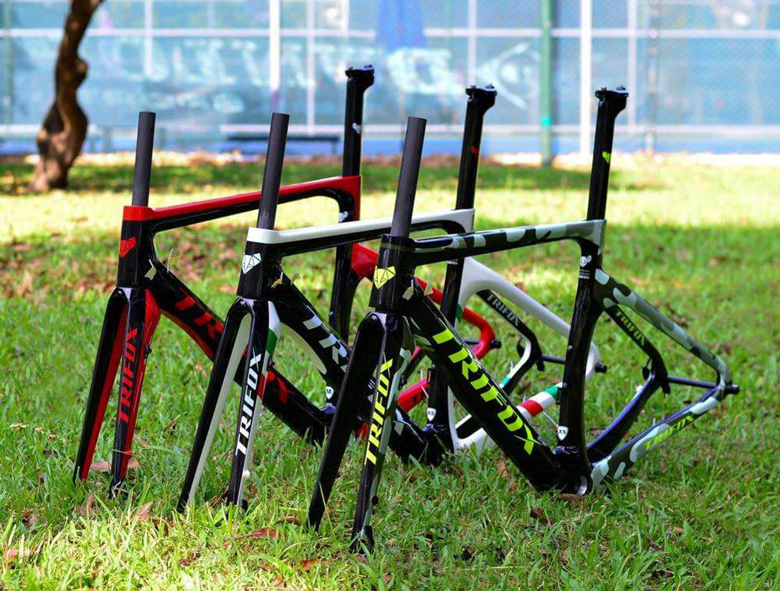
The cost of a good road bicycle depends on your needs, goals, and budget. Entry-level bikes are perfect for beginners, while mid-range and high-end models cater to more experienced riders. If you’re looking for a balance of performance and value, a carbon road bike from Trifox Bike is a fantastic choice. Whether you’re commuting, training, or racing, investing in the right road bike will enhance your riding experience and help you achieve your cycling goals. Happy pedaling!

There are endless ways to upgrade and customize a bike. Cool features like carbon fiber wheels, ceramic bearings, and oversized pulley wheels all cost a fortune.
Assuming you've already adjusted your bike to your body size and are happily racking up the miles on your new road or mountain bike, what should be your first upgrade in pursuit of performance?
The simple and correct answer is: tires.
Tires are often overlooked and underestimated as an upgrade. However, tires are the only part of a bike that comes in contact with the ground you ride on. They have a greater impact on the ride quality and performance of a bike than any other part.
This means that upgrading your bike’s original tires can significantly improve its performance, comfort, and safety. The reason for this is that most brands will skimp on tires in order to lower the pricing targets of their models, unless you buy the top-of-the-line bikes.
The good news is that the cheaper your bike is, the greater the potential benefit you'll get from a tire upgrade.
The most obvious way tires can improve performance is by making them lighter.

A little more complicated is that better tires improve performance through lower rolling resistance, which comes from internal friction or energy lost due to hysteresis.
High-end tires use better rubber compounds and more flexible tire casings to reduce these energy losses, which means that a bike with better tires will ride faster if the rider exerts the same amount of effort.
The actual improvement will vary depending on which tire you upgrade from. But the difference can be between 5 and 10 watts per tire.
Finally, better tires tend to have better grip performance, which is due to more advanced rubber compounds. Grip is somewhat difficult to quantify, and the best independent data set comes from Bike Rolling Resistance, which tests tires for rolling resistance, puncture resistance, and grip.
While some grippy tires don't fall into the high-end tire category, there is a correlation between price and how grippy a tire is. This means that for most riders, upgrading their stock tires can also improve grip and enhance safety.
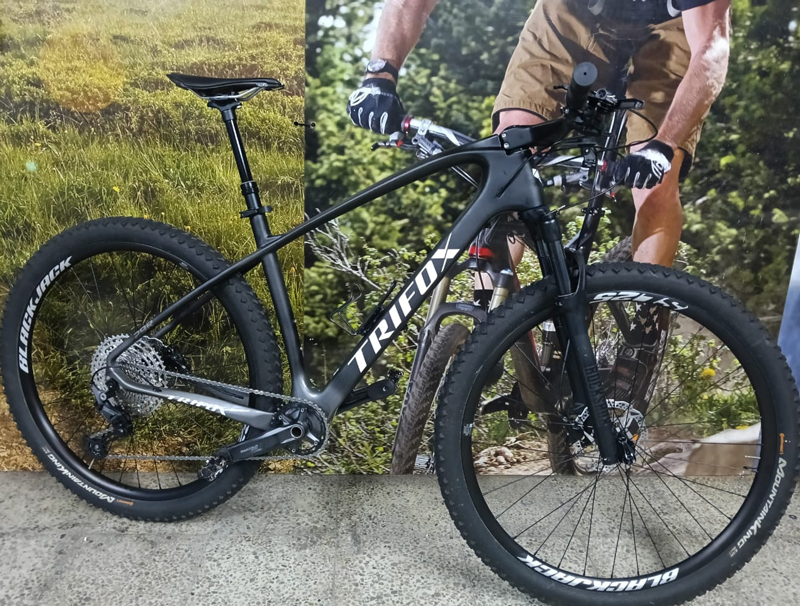
Mountain biking is more than just an adrenaline-pumping adventure—it’s also an incredible full-body workout. Whether you're navigating rocky trails, climbing steep hills, or speeding through forest paths, mountain biking challenges your body in ways that few other activities can. But is it really a good workout? Let’s break it down.
Cardiovascular Benefits
Mountain biking is an excellent cardio exercise. The constant pedaling, combined with the need to adapt to changing terrain, keeps your heart rate elevated. This improves cardiovascular health, boosts endurance, and burns calories—up to 500-600 calories per hour, depending on intensity.
Strength and Muscle Building
Unlike road cycling, mountain biking requires you to engage your entire body. Your legs power the pedals, your core stabilizes you on uneven terrain, and your arms and shoulders work to control the handlebars. Uphill climbs build lower-body strength, while technical descents and obstacles improve balance and coordination.
Mental Health Benefits
Mountain biking isn't just a physical workout—it’s a mental one too. Navigating trails requires focus, quick decision-making, and problem-solving skills. Plus, spending time in nature has been shown to reduce stress, improve mood, and boost overall mental well-being.
Low-Impact Exercise
For those looking for a joint-friendly workout, mountain biking is a great option. The suspension on mountain bikes absorbs much of the impact, making it easier on your knees and ankles compared to high-impact activities like running.
Getting Started
If you’re new to mountain biking, start with beginner-friendly trails and invest in a reliable bike like those from Trifox Bike. Their range of mountain bikes offers durability and performance, perfect for tackling any trail.
In conclusion, mountain biking is not only a good workout—it’s a fun, versatile, and rewarding way to stay fit. Whether you’re looking to improve your fitness, explore the outdoors, or challenge yourself, hitting the trails might just be the perfect solution.

























































